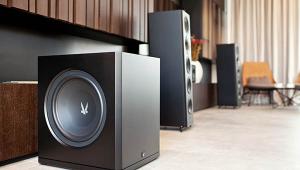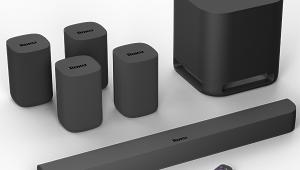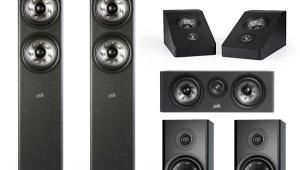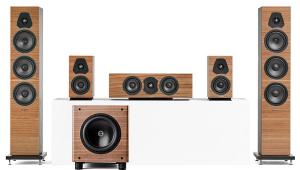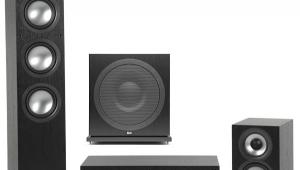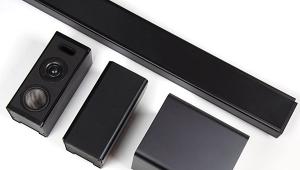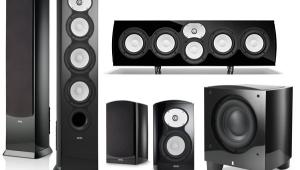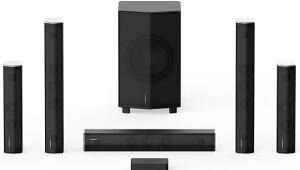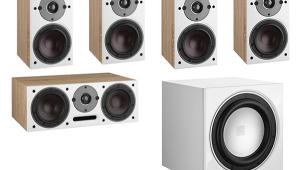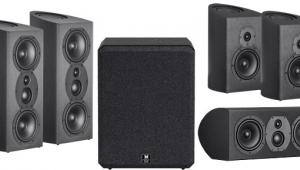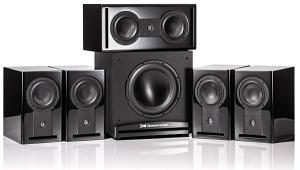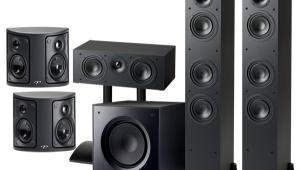Definitive Technology Demand D15 Speaker System Review
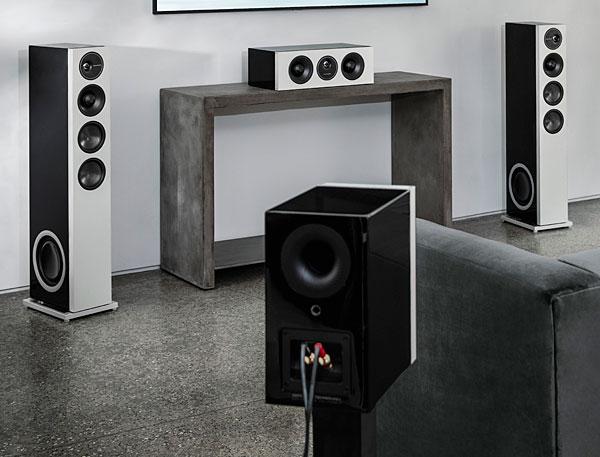
AT A GLANCE
Plus
Highly accurate sound
Impressive stereo image breadth
Solid center-channel reproduction
Well-controlled and moderately extended low end
Minus
Towers are sensitive to placement
THE VERDICT
A handsome system that sounds very good with just about everything, and with enough bass extension to satisfy most needs.
Tall, slim speakers are certainly in fashion, and it's hard to imagine many slimmer than Definitive Technology's new Demand Series D15 towers. Despite housing three 5.25-inch drivers (two carbon fiber woofers and a polypropylene midrange), a 1-inch aluminum dome tweeter, and not one but two 8-inch side-firing passive radiators, the D15 measures just 6.5 inches wide and thus indeed requires its bolt-on aluminum bottom plinth to achieve stability.
Def Tech has always balanced serious value with serious performance, and the Demand series clearly maintains the tradition. But while the firm's top-range calling card has from inception been bipolar designs, with both forward- and rearward-radiating drivers and on-board powered "subwoofer" bass sections, the Demand series breaks rank, placing conventional, monopole (forward-only), fully passive designs at the top, price-wise at least, of Def Tech's offerings for the first time.
The D15 is the second of two Demand series tower designs; the slightly larger and costlier D17 employs 6.5-inch drivers and 10-inch passive radiators yet specifies bass extension only a few Hertz lower with a modest 2 dB gain in sensitivity. To fill out our test system, the company included the Demand D5C center-channel unit and a pair of D9s, the middle of three bookshelf speaker offerings, for the surround channels, all in the gloss-white lacquer that is one of two finish options (piano black's the other).
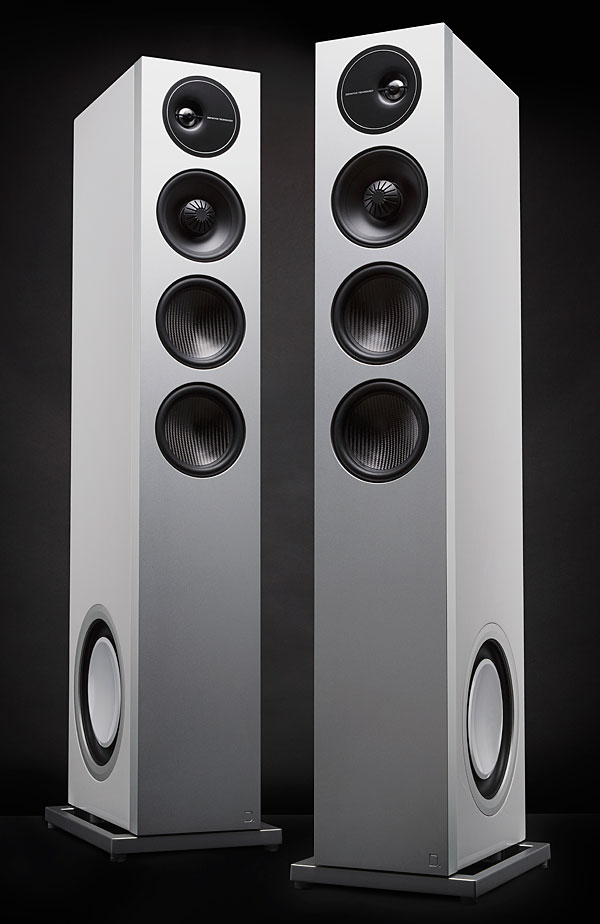
I'm a sucker for white speakers, probably because white Braun 710s were my first "real" hi-fi examples. With their gray fine-knit magnetic grilles in place and exposed, white-coned side radiators (there are no grilles for these), the D15s were stunners. The towers, thanks to the offset tweeter placement in oversized waveguide bezels that makes them look distinctly googly-eyed with grilles off, are "handed," and marked thus Left and Right. (A waveguide is, essentially, a short, directivity-controlling horn.)
Setup
With the D15 towers flanking my TV's screen and the D5C center on the low stand just below it, I allowed the Def Tech system to run for over two weeks of casual use. The surrounds went, as ever, on my high side wall stands astride the listening position.
Pre-roll accomplished, I prepared for the close-listening portion of the program, and quickly heard from the Demand Series system a familiar overall sound: focused, accurate, uncolored, with a broad, spacious sense of width and definite abilities for depth as well. In other words, it sounded like a lot of other excellent speakers I've auditioned in the past three or four years—not surprising, given the general consensus, at least among competent, science-based designers, about what makes for a good-performing, sale-able loudspeaker package. Principally: tall, slim towers producing smooth octave-to-octave balance across flat, resonance-free response; broad, gradually falling-off dispersion; and smoothly contoured, generally similar off-axis responses.
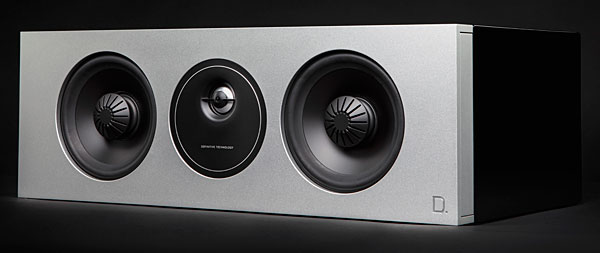
These once-rare virtues are encountered ever more frequently, thanks at least in part to the computer-aided engineering, modeling, and measurement that have become common practice. This leads in turn to what many might characterize as a boring sameness of result. Boring, that is, only in the sense that most airline flights, thanks to aviation's own advanced technologies, produce similar results: reliably smooth, crash-free trips.
The Definitive towers, then, matched my two long-term reference monitors closely, and the more modern one, an excellent powered three-way standmount monitor, almost indistinguishably. I quickly ran down my checklist of "gotcha's" without incident: baritone male vocals completely free of "hoot," "honk," or chestiness; mid-treble, as evidenced by things like cymbal rides and horn attacks, free of peakiness or formant-inducing resonances; mid-to-lower bass free of response humps or excessive 60-100 Hz-region emphasis (as proves true with most fuller-range speakers, this last in my room required pulling the D15's a bit further out from the front wall); and a well-defined stereo image that was stable over a wide frequency range.
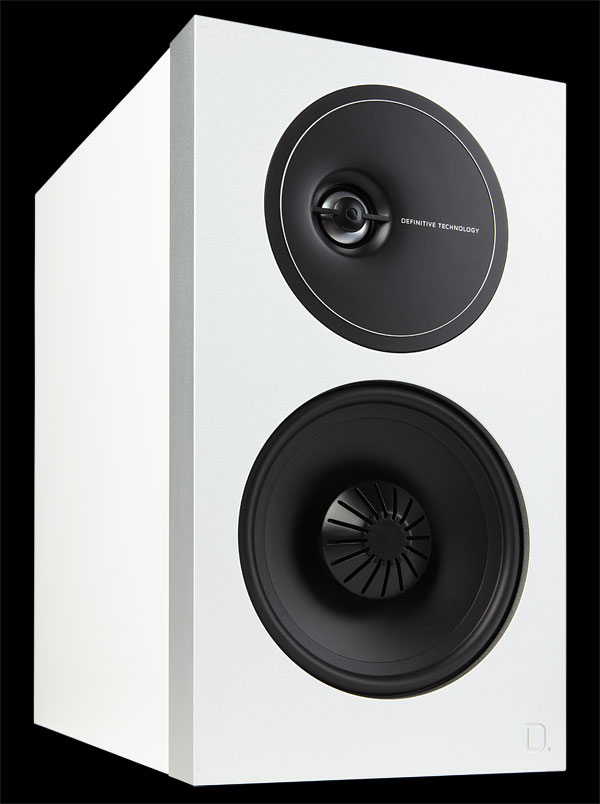
Listening
The Demand Series D15 towers, in short, are very fine reproducers, and in my room they sounded considerably fuller-range than their fairly modest 48 Hz (-3 dB) bass extension spec suggested. The track "Royals" (24-bit/48kHz FLAC, Qobuz) by Lorde opens with a loose orchestral bass-drum strike (real or synthesized—I can no longer tell these days), with fundamentals probably around 40 Hz or so and dipping lower on the decay that obligingly repeats every downbeat. Heard on the Def Tech towers its character was slightly weightier and "thicker," with the downward slide extending audibly deeper and louder than via my active monitors, which I know to be reasonably flat to a good bit south of 40 Hz in my studio.

